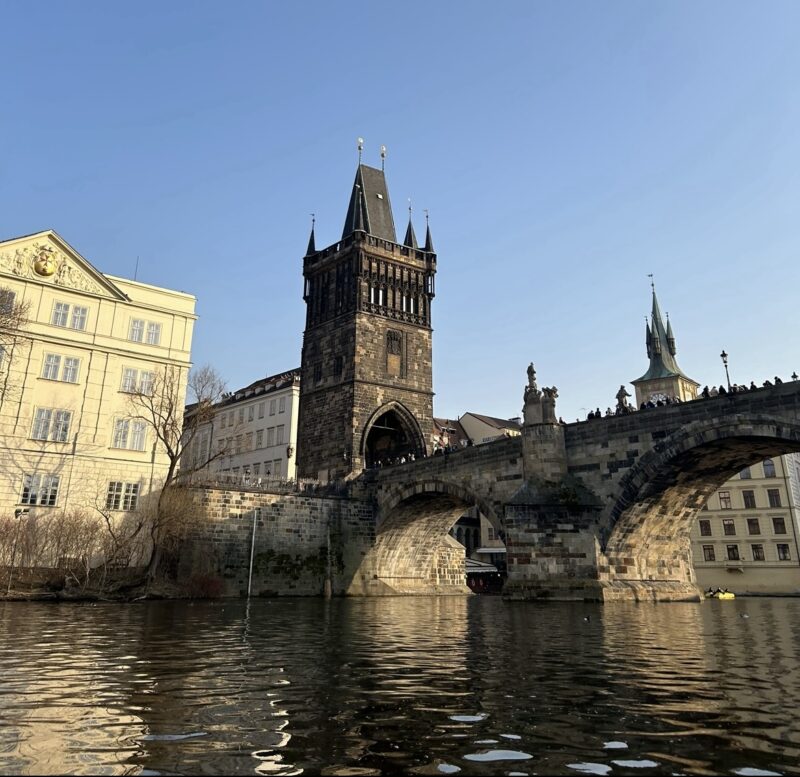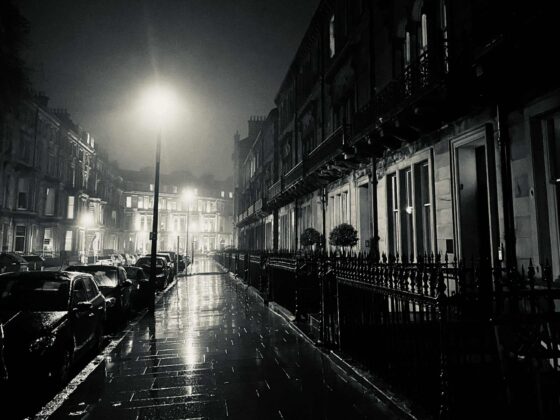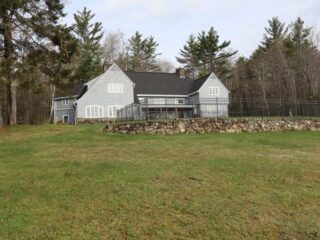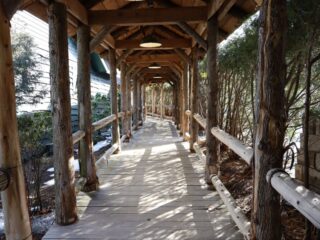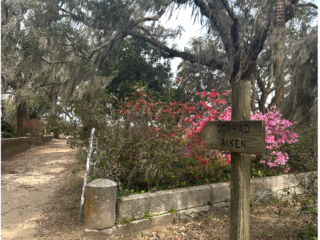By Chloe Arentz
As I sat in the middle of the Vltalva river with my jeans just a little bit wet and my hand weaving through the water, I noticed my hand getting numb from how long it waded. The cold wasn’t nearly a thought in my mind. How could it be? Above me was the array of statues and spires lining Charles Bridge, with a hundred people looking up at the lost faces, as I looked up at their present ones. My day had been unplanned, but a lovely journey through a woman’s life led me to this evening of self-reflection, floating along with myself.
Prague is and has been a haven for many. It holds the history of a thousand years in a single cobblestone. Being from the United States and a first-time visitor to Europe, it was the oldest sidewalk I’d trekked. Every step I took made me wonder who else was here before. Who
was here to live through their misery or see their happy ending, and where will their journey
intertwine with mine? I found the answer to this on a walk the morning before I found myself on
the river, when to my left was a beige, ornate building with a statue of a man perched atop the
roof.
I stood to admire the building, which in the moment was nothing too special, as many Prague
buildings are just as beautiful, if not more so. A nearby woman corrected my thoughts when she
asked if I was here because of Milena Jesenská. To my surprise, I was taking in the writer’s
childhood home, and her journey led mine thereafter.
Jesenská was born in this building into a conservative Catholic family, with her father’s dentistry occupying the first floor. In 1896, it was not her time to be encouraged into her individuality, until she decided to choose for herself. A very intelligent woman, she went to school for medical studies until she dropped out and fell in love with her future husband, Ernst Pollak. With her father not approving of this match due to Pollak’s Jewish identity, Jesenská was sent to reside in a psychiatric hospital for the better part of a year.
Upon her release, Pollak and Jesenská eloped and moved to Vienna. This is where she found
inspiration to start writing as an editor and journalist for various magazines and newspapers,
becoming known for her feminist rhetoric in wanting new opportunities for women. She was also a notable member of the communist party for a time, with her journalism making her well known in Czech circles. However, with the radicalization following Stalin’s lead, Jesenská left the party.
While her professional life thrived in Vienna, her personal life struggled immensely as her
marriage self-destructed. Through her husband, however, she had met Franz Kafka who was also a passionate writer. They developed a passion for each other which was primarily realized
through letters and almost daily correspondence, though Kafka ended this affair soon before his
death. Jesenská returned to Prague and developed a heartfelt obituary for her former lover and became the first person to translate his work into the Czech language.
As I walked through Jesenská’s neighborhood in Žižkov, Prague, I made my way to a café nearby. I sat there without distractions, drinking a caffe latte, thinking about her life. She had different experiences, lovers, careers, and aspirations. Yet they all led back to writing. She had an affair via love letters, a career via journalism, and her final impact via secret communications.
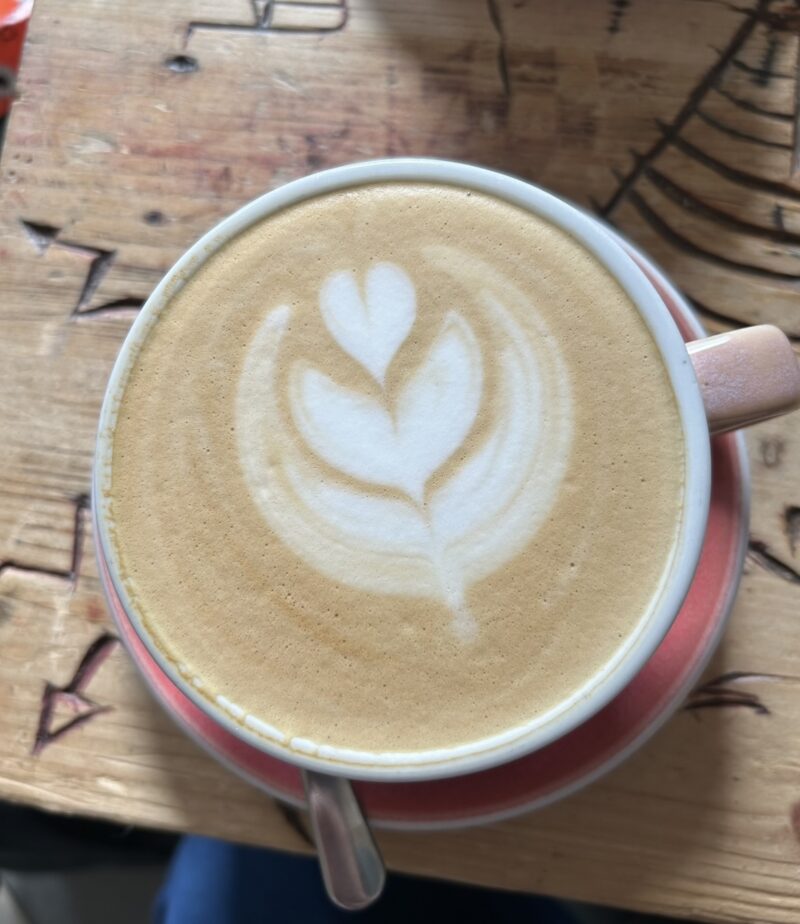
Milena Jesenská found a passion other than writing with hiding Jewish people during the Nazi
invasion of Prague during World War II. Abandoning personal interests, she worked diligently with friends to provide housing, food, and support for Jewish people while orchestrating their escape from Prague to England. Even with all of this, she was one of the few journalists writing for then illegal newspapers. Putting herself in danger for the plight of others, her bravery was something I pondered as my view of my caffe latte turned into the white bottom of the mug.
In a way I’d like to believe that I could understand her sacrifice for others, but I know that I can
only hope to ever have the same courage and impact as this incredible woman. I read about her
and her feats, columns, dreams, but it could never come close to the rush she must have felt, with each illegal article making her more known to the Gestapo. Every adrenaline boost of fear with helping transport a Jewish refugee to a safehouse. How could I begin to compare us when my bravery only extends to the little, unmemorable things? I couldn’t imagine how it would feel to put others above one’s own survival, but Jesenská managed it when not many others did.
Writers tend to have a hope to become one of the greats. One of the great poets, novelists,
modernists, short-story-ists. We have our processes and emotions and a knack for too many
words to stay in one brain, so they go to paper. I always find myself having daydreams of
touching other people’s hearts, or minds, with just a sentence. Being remembered for more, I
always want more.
After my coffee (which I noticed on my trip was the best I’d ever had, no matter what café or
restaurant I was in), a short time on the tram and a brief walk, brought me to Charles Bridge.
With bunches of crowds looking around in awe, a line of caricature artists, and the jewelry
sellers sprinkled about, I wondered if Milena Jesenská thought the same thing when she walked
these same stones. With its creation finishing in 1402, her churning mind likely thought how
incredible it was to walk the same path as a woman in the 1400s, as I thought about Jesenská in
the 1900s.
This line of thought was interrupted with a bright yellow sight in my peripheral, just off the side
of the bridge, a group of small pedal boats. A conversation with the man renting them led me to
rent one for an hour, only four American dollars, and I set off in the shoddy plastic square,
pedaling my way to the middle of the river. Watching the bridge from below gave me a
perspective of how it must have been, being on the outside looking in. Jesenská often found
herself outside of things. Outside of her father’s expectations, her marriage, her community,
history. Somehow, she found herself and her purpose through it all, despite her time being cut too short.
Milena Jesenská was discovered by the Gestapo in 1939, and sent to the Ravensbrück
concentration camp for women. She lost her friends, her support, and her writing. But through
this hardship she was able to go back to basics. Before words were written or pictured, people
talked. Stories and knowledge used to be strictly word of mouth, so why should that be lost?
Jesenská became a pillar of strength in Ravensbrück, speaking to the women with her and
inspiring hope for survival. Her intense wording and charisma became solace for her newfound
community until her death in 1944, just before the end of WWII.
The more I learned about Jesenská after discovering her childhood home, I couldn’t stop thinking just how much more she would have accomplished if she only had more time. Even being so known for her journalism, translations, and personal writing, she kept her fiery personality and zest for life despite the conditions of her end. It seems as if she was just on the cusp of breaking into her role as a great, and sacrificed it to do the hard thing, but the right thing. I think now how she deserves so much more than being known for her love life, which is unfortunately what almost always comes up when searching her.
Nearly forty-five minutes into my pedaling journey at this point, I took a last look at the bridge
and the neighborhoods on either side from my position. Alone in the middle of history, and
everyone around me turning into a blur of the past, as each minute passed. I had to start pedaling back to the dock, lest I get berated for overstaying my paid time. But Milena Jesenská stayed in my mind as I unstuck my damp jeans from the pull of the jagged plastic, and flicked my dripping hands. Her history as a lesser known great echoed on the wooden dock, with every creak stamped by time.
Chloe Arentz is a young writer with a passion for both travel and women’s history. Currently pursuing a Master of Arts in Forensic Psychology at John Jay College of Criminal Justice, her usual setting is research and fact-based papers. Her hobbies include many of the arts, including dancing, singing, coloring, writing, and theatre. She is a first-time published author for Literary Traveler, with a spark for creative historical writing.

